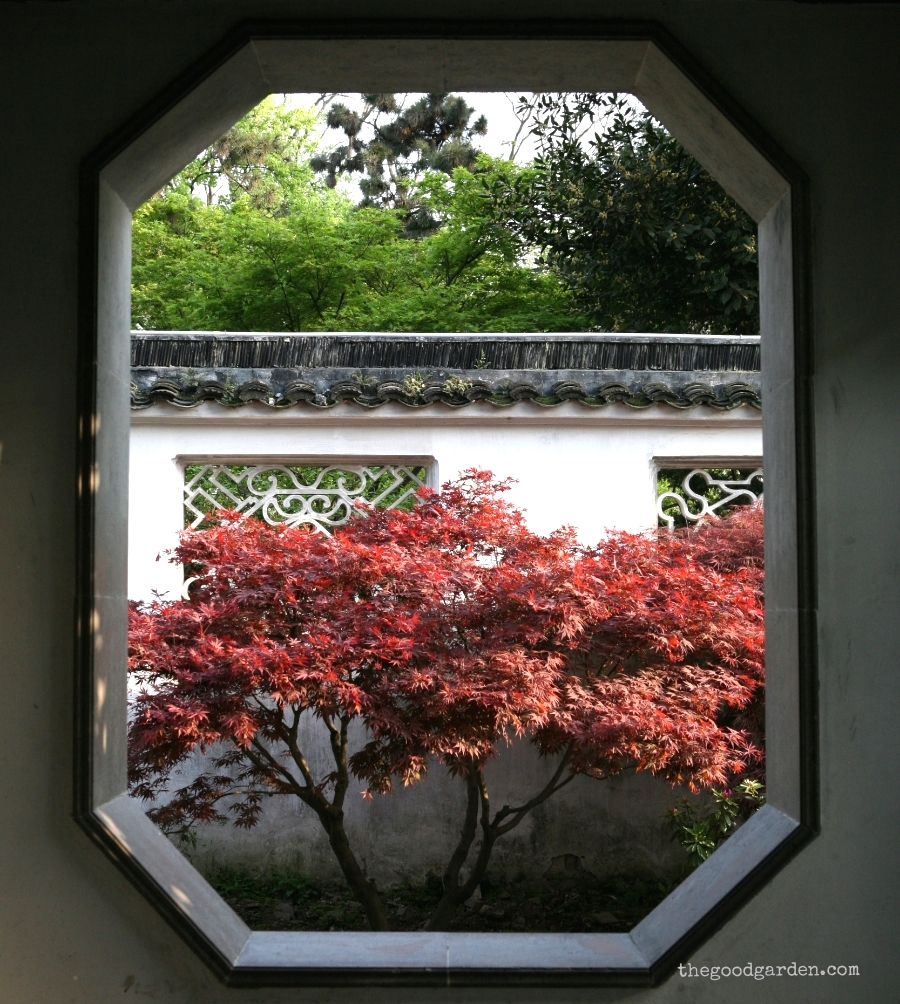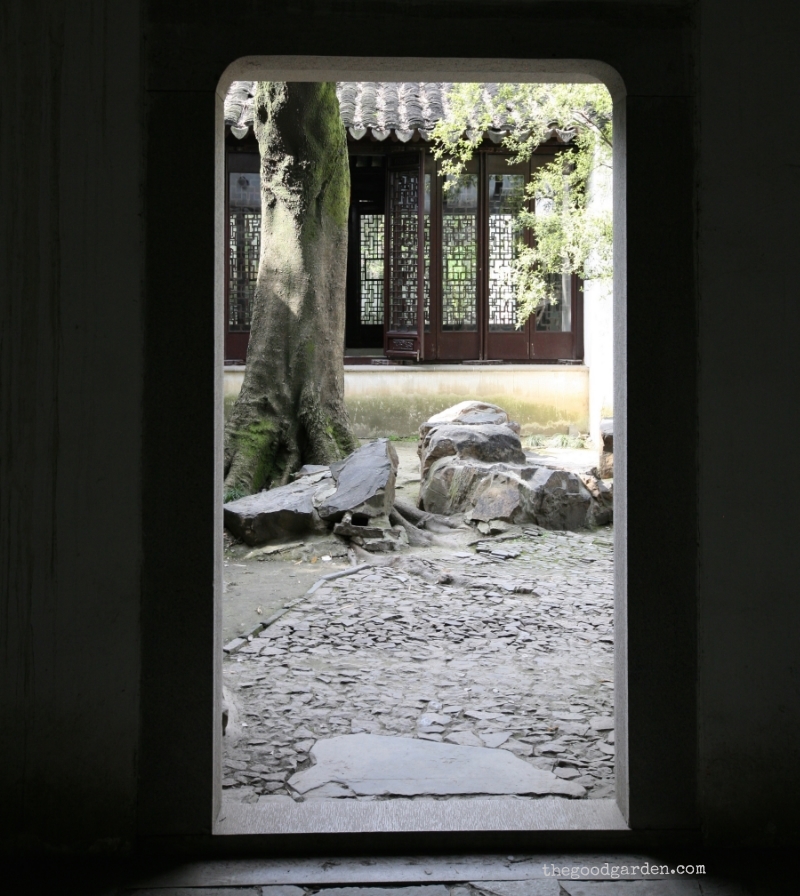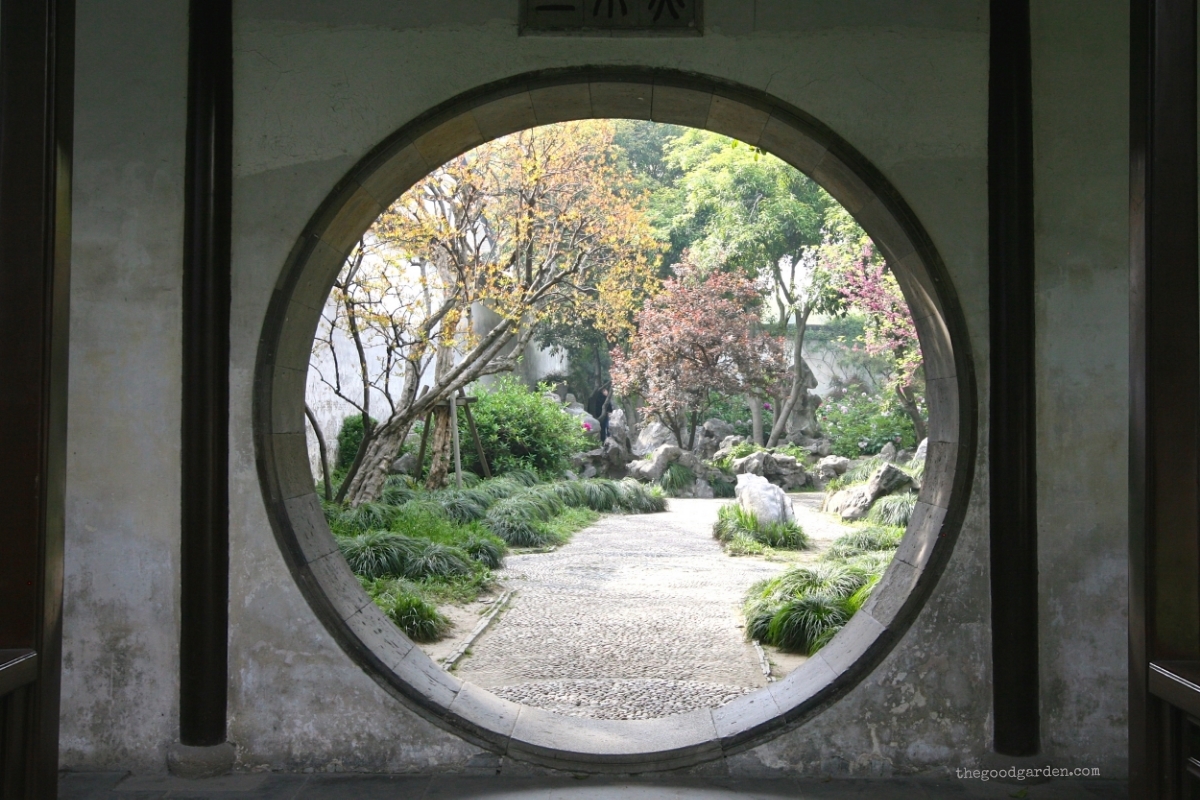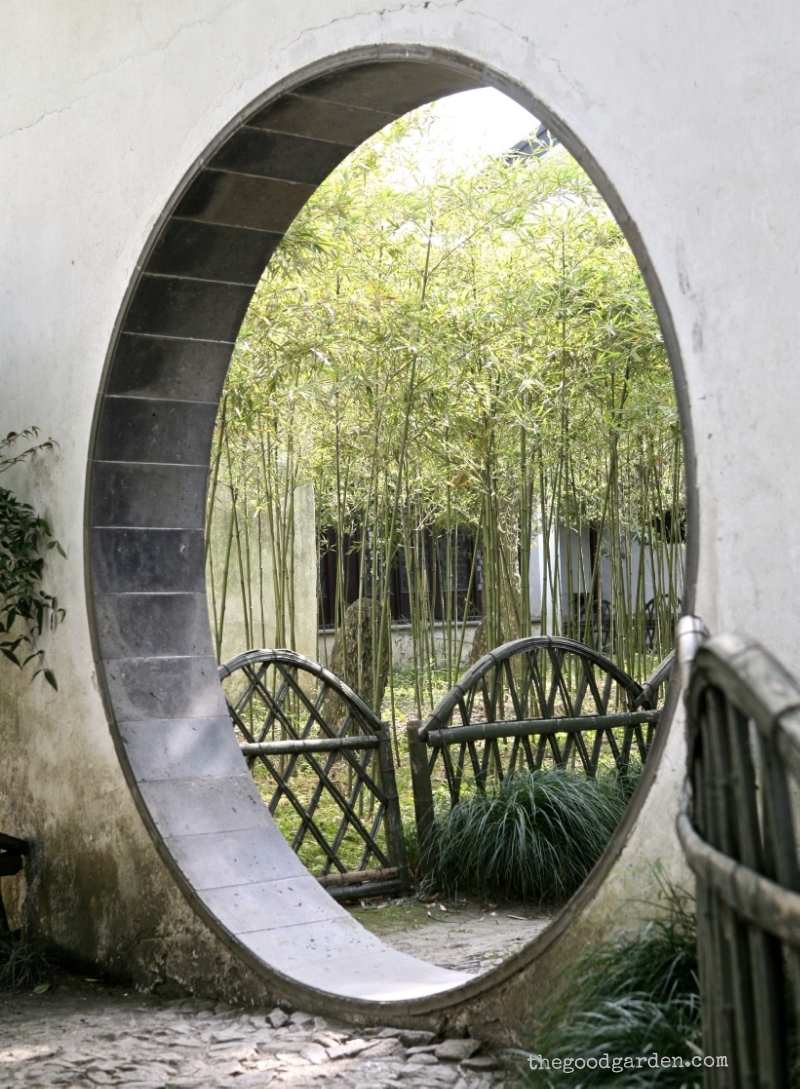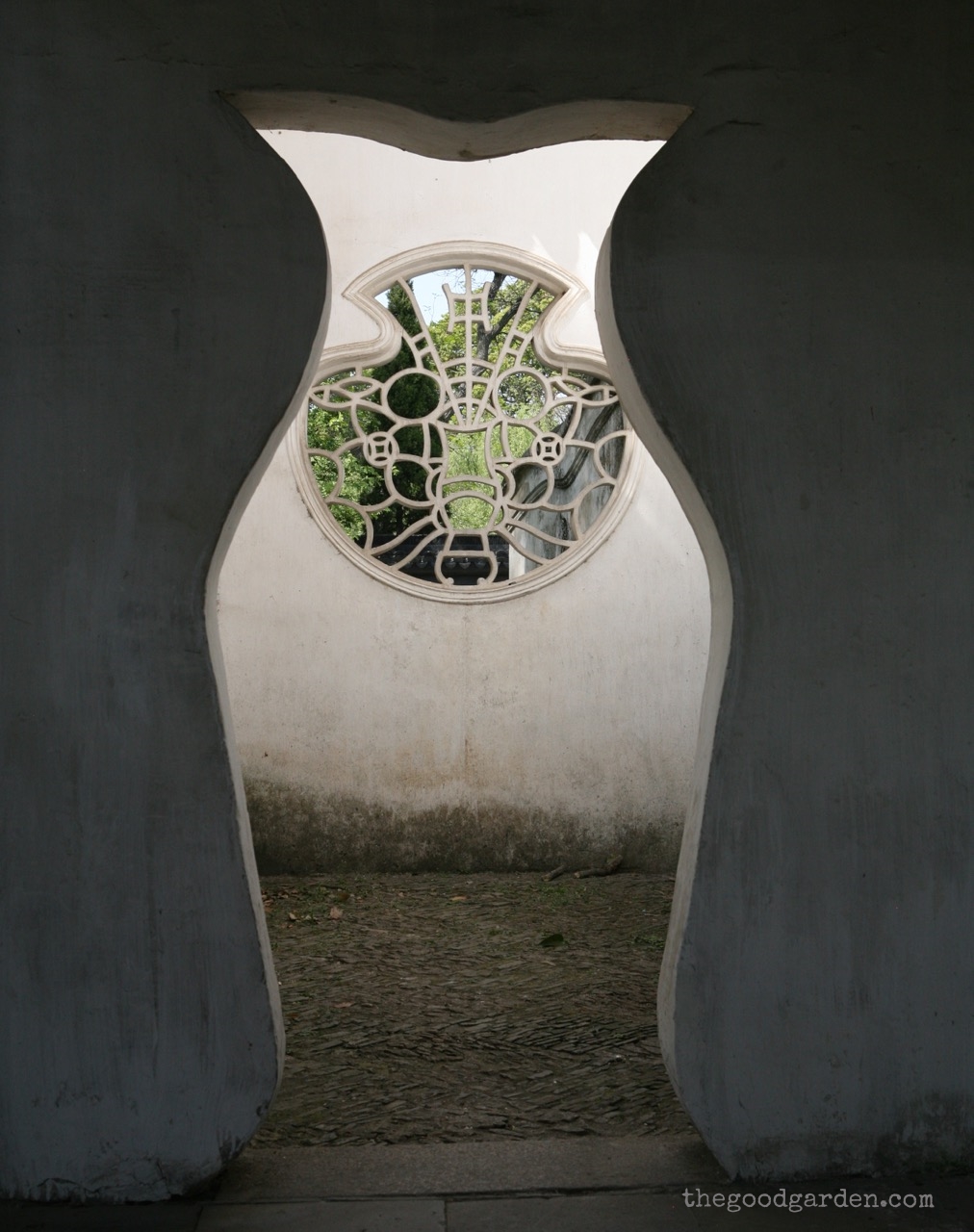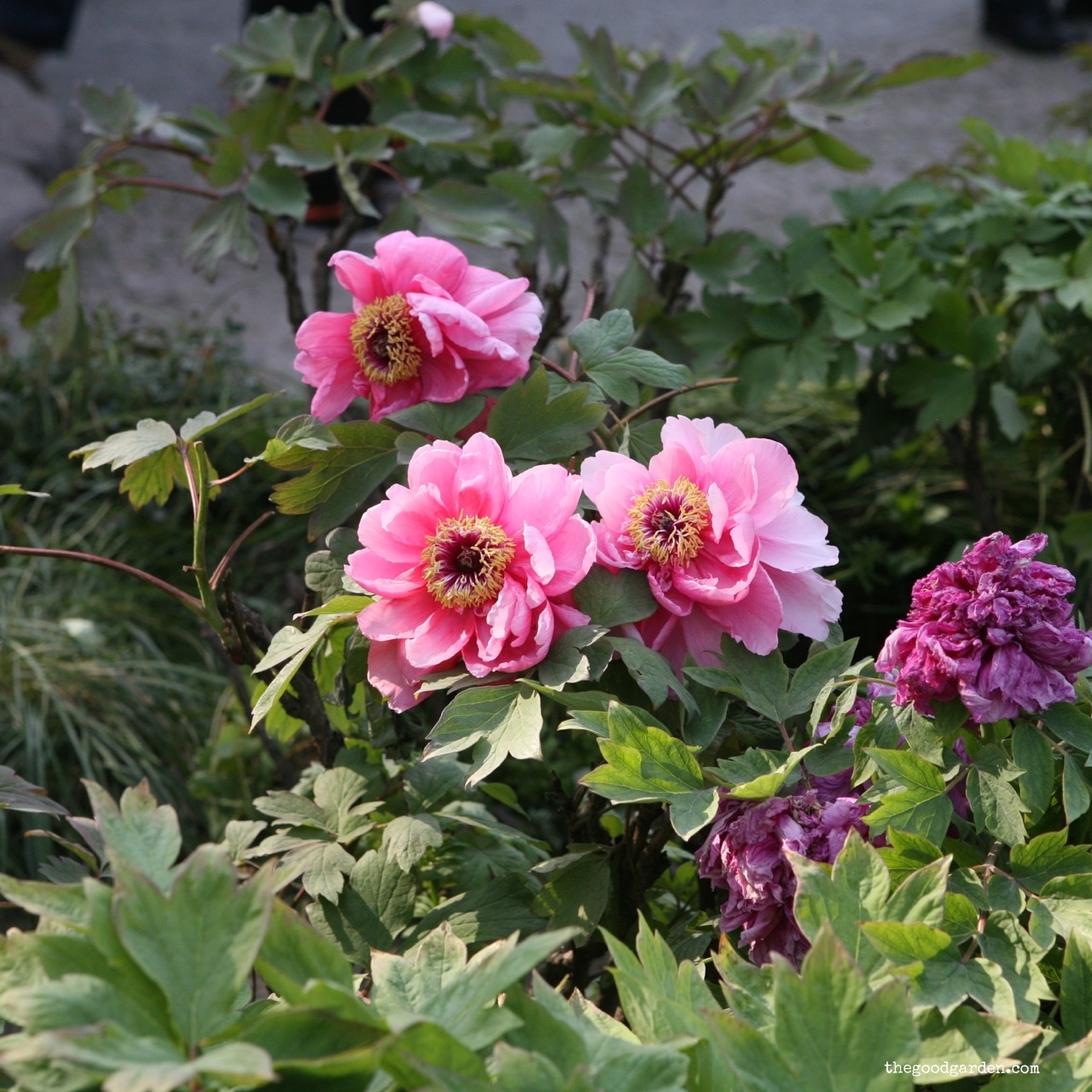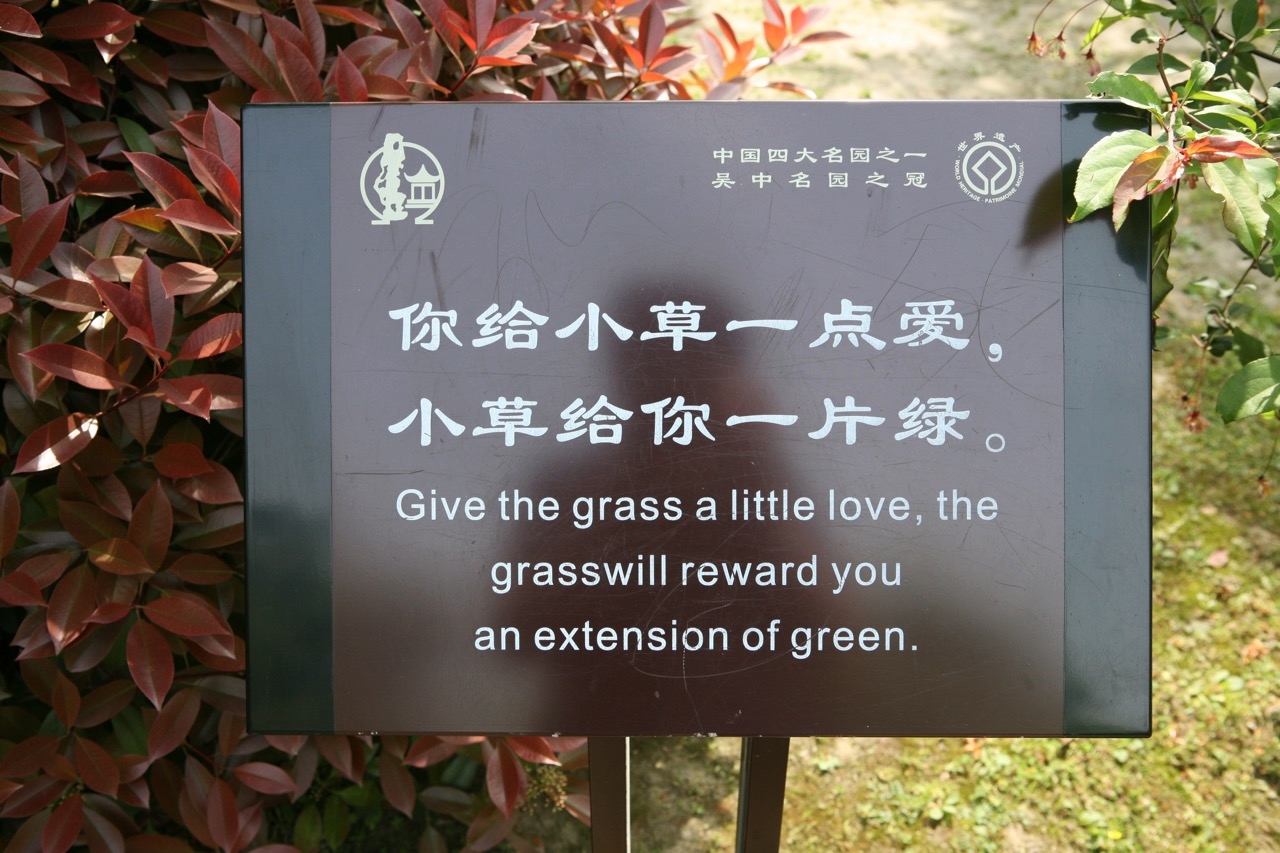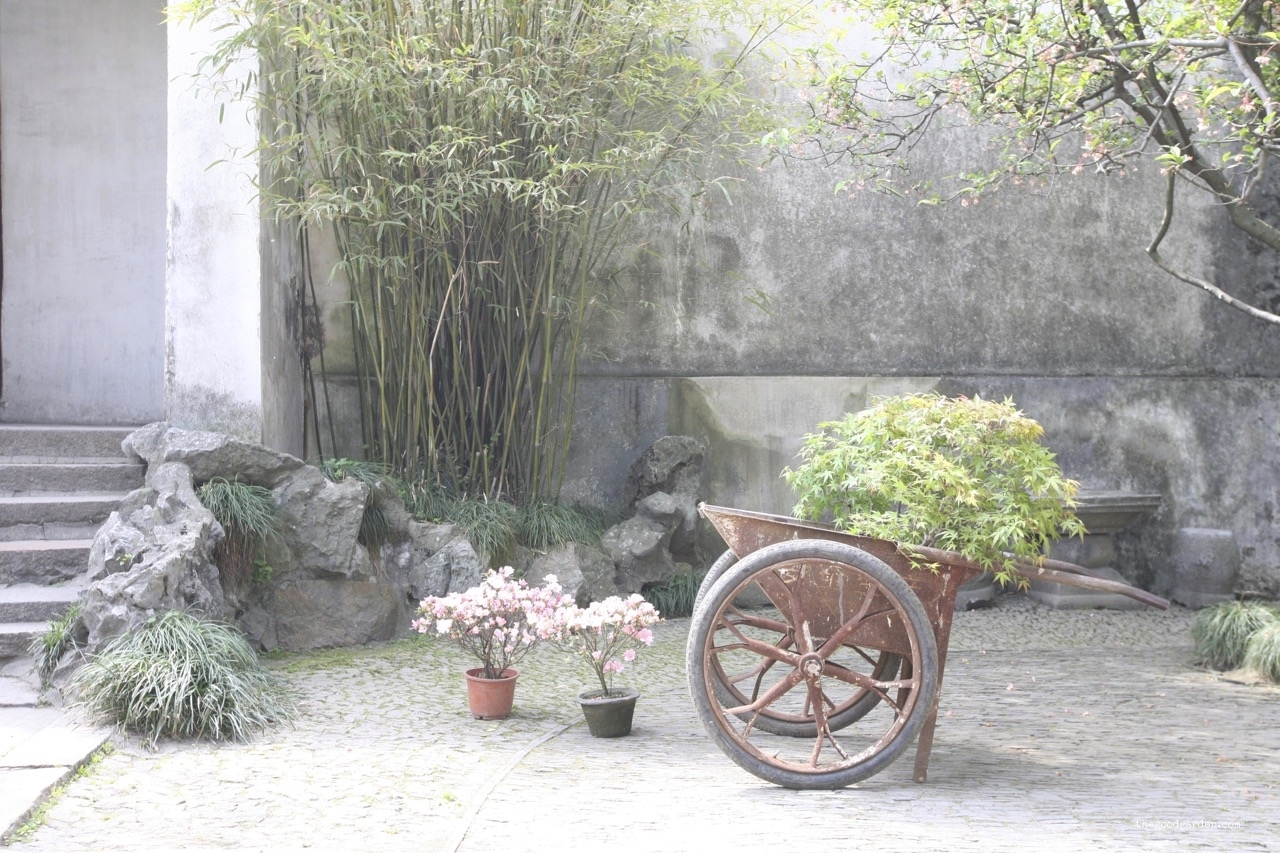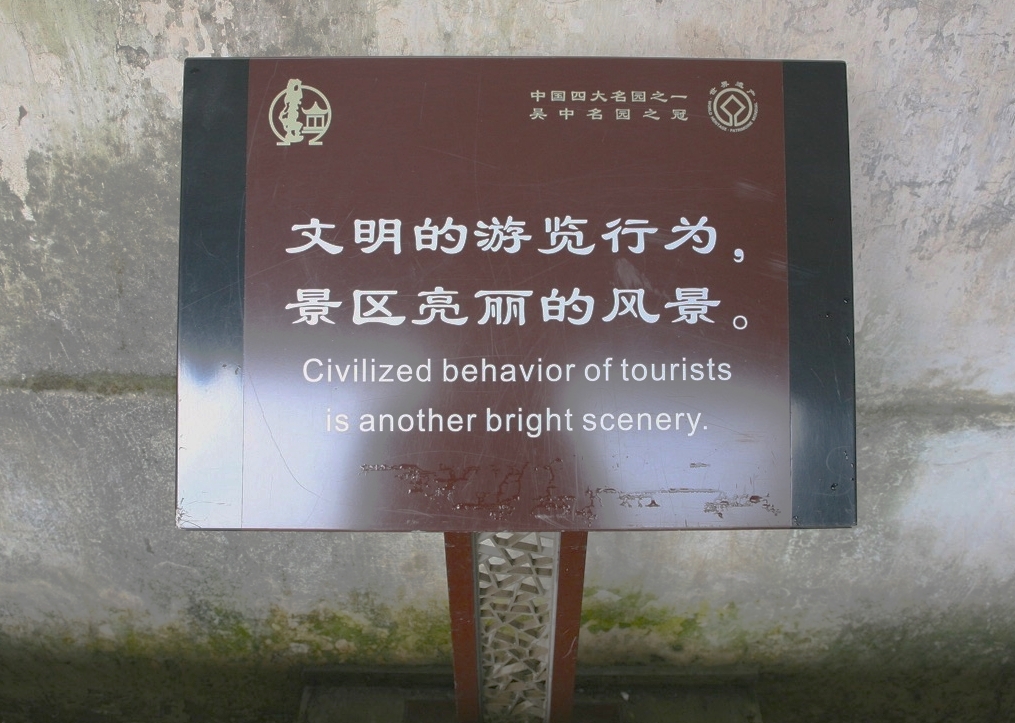Nobody does garden doors quite like these Chinese scholars. They use them to frame compositions of plants, mark the separation between sections, and guide us through the landscape. Their shape, width, and construction have been refined over millennia based on....
Read MoreChina doorways
Penjing politics
China now boasts the largest economy in the world according to the International Monetary Fund’s purchasing power parity based calculation and the second largest in absolute terms. Daily headlines remind us that the Chinese and other large economies are interconnected; developments in one market affect the others.
The Nixons meet Zhou in Beijing outside of Air Force One, 1972. Source: USC- US China Institute.
My recent visit to the National Bonsai and Penjing Museum in Washington, DC reminded me that this was not always the case.
In the 1960’s China was largely closed to the West. In a significant gesture to open relations, US President Nixon visited Beijing in 1972. According to Travel China Guide, “Chinese Premier Zhou Enlai gave a box of Panda brand cigarettes to the First Lady. He said he wanted to give her this present. Mrs. Nixon said she didn't smoke. The Premier said ‘not the cigarette but the giant panda.’ The story ended in an atmosphere of great excitement. A couple of pandas, Ling Ling and Xing Xing, went on their journey to America.” These were the first of about a dozen pandas given to western countries in what is known as “Panda Diplomacy”.
But panda’s weren’t the only gifts that resulted from Nixon’s 1972 trip to China. That year, the Chinese also gave the United States a group of century old, living, miniature landscapes, called Penjing. It is remarkable that during the 1960’s Cultural Revolution, Penjing was looked down upon as a middle class waste of time; entire collections were lost. Some masters were forced to put down their bonsai tools in order to plant rice. Thankfully, many plants were guarded to ensure their survival. By the 1970’s, the art form was again appreciated for its cultural significance.
Presenting living things as gifts is always a tricky affair. Imagine receiving a valuable plant when the giver regularly asks “how’s the plant doing?” Now consider the pressure when the tree embodies the artistry of generations of masters, and the gift is between two countries trying to establish better relations. A New York Times headline about the trees captured the pressure perfectly: “Tiny Trees Pose Big Job for Keepers.”
Fortunately, the Chinese gift was passed on to the experts at the US Arboretum where they thrived. In 1976, the Japanese people added an important collection of bonsai, called the Bicentennial Collection. Together these became the National Bonsai and Penjing Museum.
Among those behind the creation of the museum were John Creech, Robert Drechsler, and Marc Cathey. Arboretum director John Creech’s personal passion was to bring, “ornamental horticulture into the mainstream.” His vision was to create a display of bonsai in an American setting and facilitated the 1976 Japanese gift.
From the beginning, the person responsible for keeping the plants thriving was Robert “Bonsai Bob” Drechsler. He was the first curator of the collection and carried out this role for over 20 years.
Marc Cathey - horticulturalist, author, and a later Arboretum director - pushed to integrate both Penjing and Bonsai into the single comprehensive museum that we enjoy today. His Washington Post obituary describes him as “a flamboyant promoter of gardening everywhere... tall, dapper, and with ties and handkerchiefs as colorful as his persona.”
Dr. John Creech added an important Japanese bonsai collection to the US in 1976 - The Bicentennial Collection - and convinced the US government to build a structure to showcase the trees. Source: Capital Bonsai, Aarin Packard.
Penjing, or “tray scenery” dates back to at least 700 CE in a tradition stemming from Buddhist and Daoist religious ideals. Penjing tend to have a wide variety of tree shapes and colorful pots.
Buddhist monks and diplomats brought examples back to Japan where the art developed into Bonsai, or “potted tree.” Bonsai tend to have larger trunks and simpler containers.
In both cases, artisans manipulate the plant’s trunk size and branch shape to replicate features of a wild, mature tree; to accentuate age. Rocks, architectural features, and figures are sometimes added to enhance the illusion of a miniature landscape.
The photos above are from the Chinese pavilion.
The National Penjing and Bonsai Museum is set up with separate pavilions to showcase both styles. Now is a great time to visit to enjoy this incredible collection to reflect on the historic moment that sparked its creation as well as the centuries old tradition that these trees represent..
Not lost in translation
I love Chinese garden signs! Since I don’t speak Chinese, I am thankful for their English sub-titles. These bits of English make me feel welcome and give me a clue to what’s going on. Best of all, their awkward translations are poetic and thought-provoking. Of course they have a practical purpose by reminding us to do the right thing like 'stay on the path'. But even better, they often offer an incentive to do so, giving us a reward for behaving well, like 'staying on the path makes you a beautiful person.' In marketing speak, they make a call to action linked to a specific benefit. Brilliant!
Here are a couple of examples that I encountered at the world famous scholar gardens in Suzhou, China:
“Civilized behavior of tourists is another bright scenery”
“Give the grass a little love, the grass will reward you with an extension of green”
“Kindly treat the virescence around in the way life is treated”
Translating things is never easy, but there are a few headwinds when it comes to Chinese-to-English translations: different grammatical rules, limited software, and a lack of good translators.
China-Mike.com has a wonderful post on what he calls “Chinglish” where he further explains, “Chinese—like English—is highly idiomatic… Many popular [idioms] have a universally understood moral – a kind of cultural shorthand that virtually every Chinese person understands… Chinese also lends itself to ‘poetic’ – almost haiku-like translations. ..’Stay off the grass,’… might read, ‘The grass is smiling at you, please be kind.’ ”
I believe that more gardens around the world should have signs like these; and we should all translate our garden signs into multiple languages. I am sure that translations of English sayings into Chinese are just as entertaining.
See more Chinese garden stories here.


